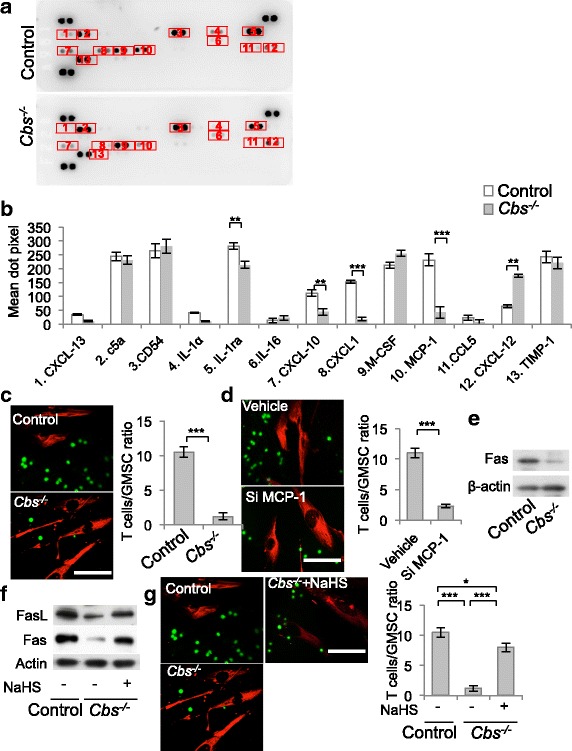Fig. 4.

GMSCs achieved immunomodulation through Fas/FasL-mediated T-cell apoptosis. a, b Cytokine profiles of control and Cbs−/− GMSCs, assessed by cytokine array. c GMSCs recruited T cells in transwell coculture, and Cbs−/− GMSCs recruited less T cells compared with controls (n = 5). d Capacity of GMSCs recruiting T cells was attenuated after MCP-1 siRNA treatment (n = 5). e, f Fas expression decreased in Cbs−/− GMSCs compared with control GMSCs, while decreased Fas expression in Cbs−/− GMSCs was partially restored by NaHS treatment. g NaHS treatment restored the attenuated capacity of recruiting T cells by Cbs−/− GMSCs, as assessed by immunofluorescence staining (n = 5). *P < 0.05, **P < 0.01, ***P < 0.001. Scale bar: 10 μm. All experimental data verified in at least three independent experiments. CXCL chemokine (C–X–C motif) ligand, IL interleukin, M-CSF macrophage colony stimulating factor, MCP-1 monocyte chemotactic protein 1, GMSC gingiva-derived mesenchymal stem cell, si small interfering, FasL Fas ligand
